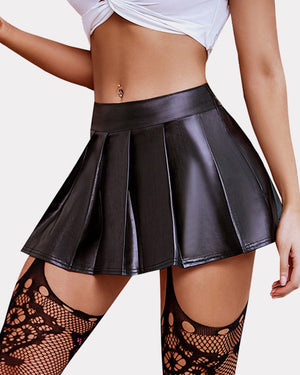Unveiling the Allure: The Timeless Journey of Mini Skirts Through Fashion History
The mini skirt is more than just a piece of clothing; it's a symbol of freedom, rebellion, and self-expression that has significantly shaped the landscape of fashion history. Emerging in the 1960s, this iconic garment encapsulated the cultural shifts of the time, reflecting a society in transition. The mini skirt broke away from traditional attire, allowing women to embrace their individuality and assert their presence in a male-dominated world. This article will delve into the fascinating evolution of the mini skirt, exploring its origins, the diverse styles it has inspired, its impact on popular culture, and its revival in contemporary fashion. Join us as we explore the journey of this timeless piece and its enduring allure.

The Origins of the Mini Skirt
The mini skirt first emerged in the early 1960s, a decade marked by dramatic social changes and a burgeoning youth culture. This new fashion statement was largely credited to British designer Mary Quant, who is often hailed as the pioneer of the mini skirt. Inspired by her desire to create accessible and fun clothing for young women, Quant introduced the mini skirt as a bold departure from the longer hemlines of the past. The timing was perfect; the feminist movement was gaining momentum, and the sexual revolution was in full swing. Women were beginning to demand more freedom, both socially and politically, and the mini skirt became a powerful symbol of that liberation. Iconic figures like Jean Shrimpton, a model and actress, helped popularize the style, donning the daring garment at events and in magazines, further embedding the mini skirt into the cultural consciousness. This era marked a significant shift in fashion, where clothing was no longer just about modesty but a form of self-expression.
Evolution of Styles and Fabrics
The 1960s, 1970s, 1980s, and 1990s saw a dynamic evolution of the mini skirt, adapting to changing attitudes and aesthetics. Each era emerged with its own diverse styles: from flared and fitted to bodycon and A-line silhouettes, the mini skirt became a staple that reflected the changing ideals of femininity and empowerment. It embraced everything from casual cotton and denim to luxurious lace and leather, showcasing an array of patterns and fabrics that appealed to women of all walks of life. Often deemed provocative, the mini skirt maintained its popularity by continuously evolving and capturing the attention of fashion enthusiasts, remaining a stylish and bold statement throughout the decades.
Mini Skirts in Popular Culture
The influence of mini skirts extends far beyond the realm of fashion; they have made significant appearances in music, film, and art throughout the decades. In the 1960s, the mini skirt was immortalized by artists like Twiggy and film icons such as Julie Christie, who wore the garment with confidence and charm, cementing its place in popular culture. The 1970s and 1980s saw the mini skirt donned by pop stars like Madonna, who pushed boundaries and redefined femininity through her daring outfits. More recently, mini skirts have appeared in films and television shows, often associated with strong, independent female characters. The 1995 film "Clueless" showcased the iconic plaid mini skirt, influencing a generation of young women. It’s fascinating how a simple piece of clothing can evoke such strong cultural references and memories. Friends share stories of their favorite music videos featuring mini skirts, linking them to pivotal moments in their lives. The mini skirt has become a canvas for cultural expression, continuously evolving while leaving its mark in the annals of history.
Contemporary Trends and Future of Mini Skirts
In a growing awareness of sustainability and empowerment, contemporary trends in mini skirts reflect a shift toward eco-friendly materials and ethical production methods. Designers are increasingly incorporating chunky boots, oversized jackets, and fresh styles into their collections, aiming to resonate with new audiences. The mini skirt remains an iconic piece that embraces self-expression, captivating fashion enthusiasts and reflecting the unique tastes and values of each generation. As trends continue to evolve, the mini skirt will undoubtedly adapt, showcasing its resilience and timeless allure.
The Enduring Significance of the Mini Skirt
The mini skirt is a timeless piece that has transcended generations, weaving itself into the fabric of fashion history. From its bold beginnings in the 1960s to its contemporary iterations, the mini skirt remains a powerful symbol of freedom, self-expression, and empowerment. Its ability to adapt to changing societal norms and trends is a testament to its enduring appeal. As we celebrate the mini skirt's journey, we are reminded of its significance in shaping not just fashion, but also the way women express themselves and assert their identities. Whether worn as a statement of rebellion or a celebration of femininity, the mini skirt continues to inspire and captivate, proving that it is much more than just a garment—it's a cultural phenomenon.







